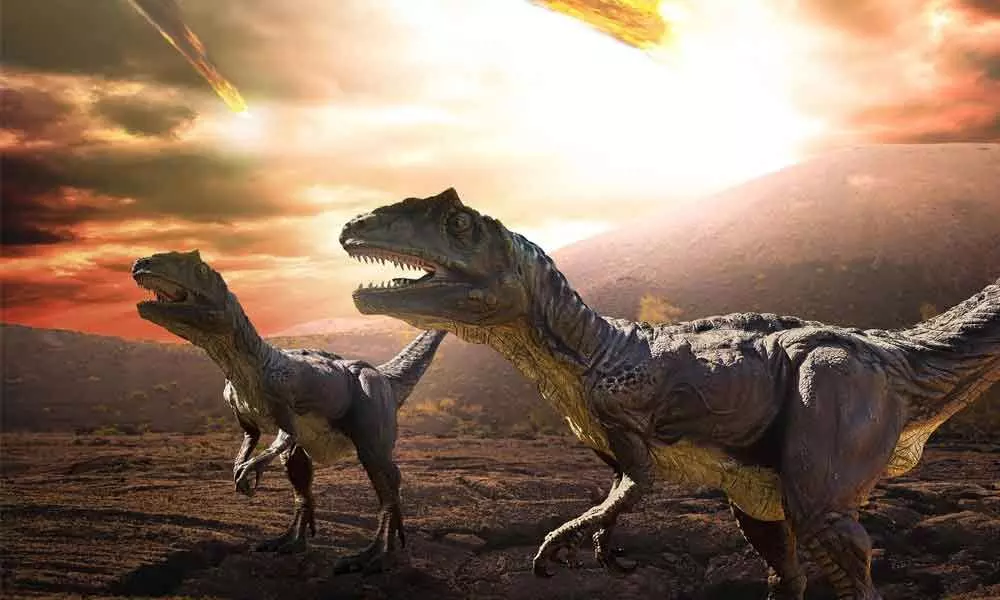Anthropocene extinction and its impact on biodiversity

Anthropocene extinction and its impact on biodiversity
On the Earth life began about 3.5 billion years ago. The first life forms were single-celled organisms. The first multicellular organisms appeared about 610 million years ago (mya) which led to evolve many different types of organisms during the next ten million years in an event called Cambrian Explosion. This sudden burst of evolution may have been caused due to some environmental changes which made planet Earth's environ more suitable for a wider variety of life forms
Evolutionary history of life represents the current scientific theory outlining the major events during the development of life on planet Earth. Biologically, evolution is important because it drives biodiversity: some traits will become predominant while others will become rare over the course of time.
On the Earth life began about 3.5 billion years ago. The first life forms were single-celled organisms. The first multicellular organisms appeared about 610 million years ago (mya) which led to evolve many different types of organisms during the next ten million years in an event called Cambrian Explosion. This sudden burst of evolution may have been caused due to some environmental changes which made planet Earth's environ more suitable for a wider variety of life forms.
Plants and fungi appeared about 500 mya, followed by arthropods , next came amphibians - 300 mya followed by mammals 200 mya and birds around 150 mya. Though large life forms have been very successful on Earth but most of life forms on Earth today are prokaryotes - small, relatively simple single-celled organisms. More than 99 percent of all species, amounting to over five billion species that ever lived on Earth are estimated to be extinct. Estimates on the number of Earth's current species range from 10 to 14 million, of which 1.2 million have been documented and rest are yet to be described.
Species go extinct constantly as environments change, as organisms compete for environmental niches and as genetic mutation leads to the rise of new species from older ones. Occasionally biodiversity on Earth takes a hit in the form of mass extinction-- refers to a substantial increase in the degree of extinction or when the Earth loses more than three-quarters of its species in a geologically shorter period of time. A large extinction-event often represents an accumulation of smaller extinction-events that take place in a relatively brief period of time. Extinction of a species where it ceases to exist in a particular area but continue to exist elsewhere is called extirpation.
First it was proposed by anatomist, George Cuvier in 1796 in Paris that life on Earth was not static and that species could disappear due to comet or asteroid impact. But the scientific community could tend to accept his hypothesis in early 1990's, with the further study of geological and fossil records that the Cretaceous-Paleogene (K-Pg) extinction was due to an extra-terrestrial impact. The Researchers now are of the opinion that K-Pg was just latest of five major extinction events and we're currently in the middle of a sixth event. Each event had a different impetus, some took place over the span of millions of years while others were extremely sudden, having in common though they reshaped the face of life on Earth by wiping out a significant portion of it. Ordovician Extinction: About 440 million years ago, the earliest known mass extinction, when most of the life on Earth lived in its seas. Its major casualties were marine invertebrates including brachiopods - a group of shelled species, trilobites - marine arthropods, bivalves - large molluscs and corals, many species from each of them went extinct during this time. The main cause is thought to be due to movement of Supercontinent Gondwana into Earth's southern hemisphere, causing sea levels to rise and fall repeatedly over a period of millions of years eliminating habitat and species.
Late Devonian Extinction: About 370 mya, there was abrupt cooling with the development of glaciers and substantial lowering of sea levels, caused an enormous loss to biodiversity, taken place in a span of five lakhs to 25 mys in which corals, trilobites and brachiopods have vanished.
Permian-Triassic Extinction: About 250 mya, trilobites were killed off entirely, almost no form of life was spared by this event and caused the disappearance of more than 95 percent of marine life and 70 percent of land dwelling vertebrates, a huge loss to global biodiversity, naming the event as Great Dying. The main cause of this extinction is thought to be gradual change in climate, sudden catastrophe including volcanic eruptions, asteroid impacts and sudden release of greenhouse gases from the seafloor. Triassic-Jurassic Extinction: About 200 mya, occurred before breakup of Supercontinent of Pangaea - assemblage of earlier continental units, possibly due to an asteroid impact and enormous volcanic eruptions, vanishing a third of marine species, large amphibians and crocodiles.
Cretaceous-Paleogene Extinction: About 65 mya, the most recent event - wiping out non- avian Dinosaurs and extinguished many species of early mammals, amphibians, reptiles, birds and insects. The scientists estimated 75 percent of species living at the time of the K-Pg extinction were wiped out.
The ongoing extinction is termed as Holocene Extinction, started about 12000 years ago at the end of last glaciation. The present event may not have been the product of natural forces, as previous five events were, but it is increasingly a human all-round interference in nature, researchers have described it as Sixth Mass Extinction or the Anthropocene extinction, as the 'most serious environmental problem'/threat to the persistence of civilization, since the loss of species here will be permanent, according to the new research published in the journal proceedings of the National Academy of Sciences of the United States of America.
To cite few examples, the chemical analysis of entire layer of soil in many parts of Australia is charred and blackened, having been burned by fire on large scale by ancient aborigines caused die-off of plants and animals. The species affected included three - ton wombat, diprotodon, the marsupial lion and a crocodile-sized goanna. Mammoths maintained an entire ecosystem and survived as long as they did - the mammoth steppe, then the formerly liveable, vibrant areas in the northern hemisphere became cold deserts. Neanderthal bones have been found all over Europe, they lived there about one lakh years and about thirty thousand years before they disappeared. Their disappearance coincided with arrival of Homo sapiens in Europe. Archaeological evidence suggests that in whichever regions human arrived inhabited by Neanderthals the latter disappeared. But for humans Neanderthals would not have gone extinct.
In prehistoric times South Africa was reported to have been known for Rhino field. But now there are no rhinos, so as the Zebra-like quagga. Indian Aurochs disappeared around 2000 BCE; Indian cheetah has gone extinct from India 60 years back; Gigantopethecus is extinct, was the largest known ape ever lived in the world; Sivatherium was giraffe like animal, gone extinct. Silphium plant, extinct, was used as a medicine for diseases and also as contraceptive by ancient Greeks and Romans.
The Centre for Biological Diversity warns that the effect of Anthropocene extinction will worsen in the coming decades as the resulting genetic and cultural variability will change entire ecosystems. 'When the number of individuals in a population or species drops too low, its contribution to ecosystem functions and services become unimportant, its genetic variability and resilience is reduced and its contribution to human welfare may be lost.
According to a recent analysis, the sixth mass extinction of wildlife on Earth is accelerating. More than 500 species of land animals are on the brink of extinction and are likely to be lost within 20 years; the same number were lost over whole of the last century. The scientists say that without human destruction of nature, this rate would have taken thousands of years and they warned that this may be a tipping point for the collapse of civilisation.
The Holocene Extinction is being caused not by natural catastrophe but by the activity of one, "One Weedy Species", that is us - humans. Can 'this species' check extinction by taking well known measures for protection of biodiversity and most importantly for its own survival??














